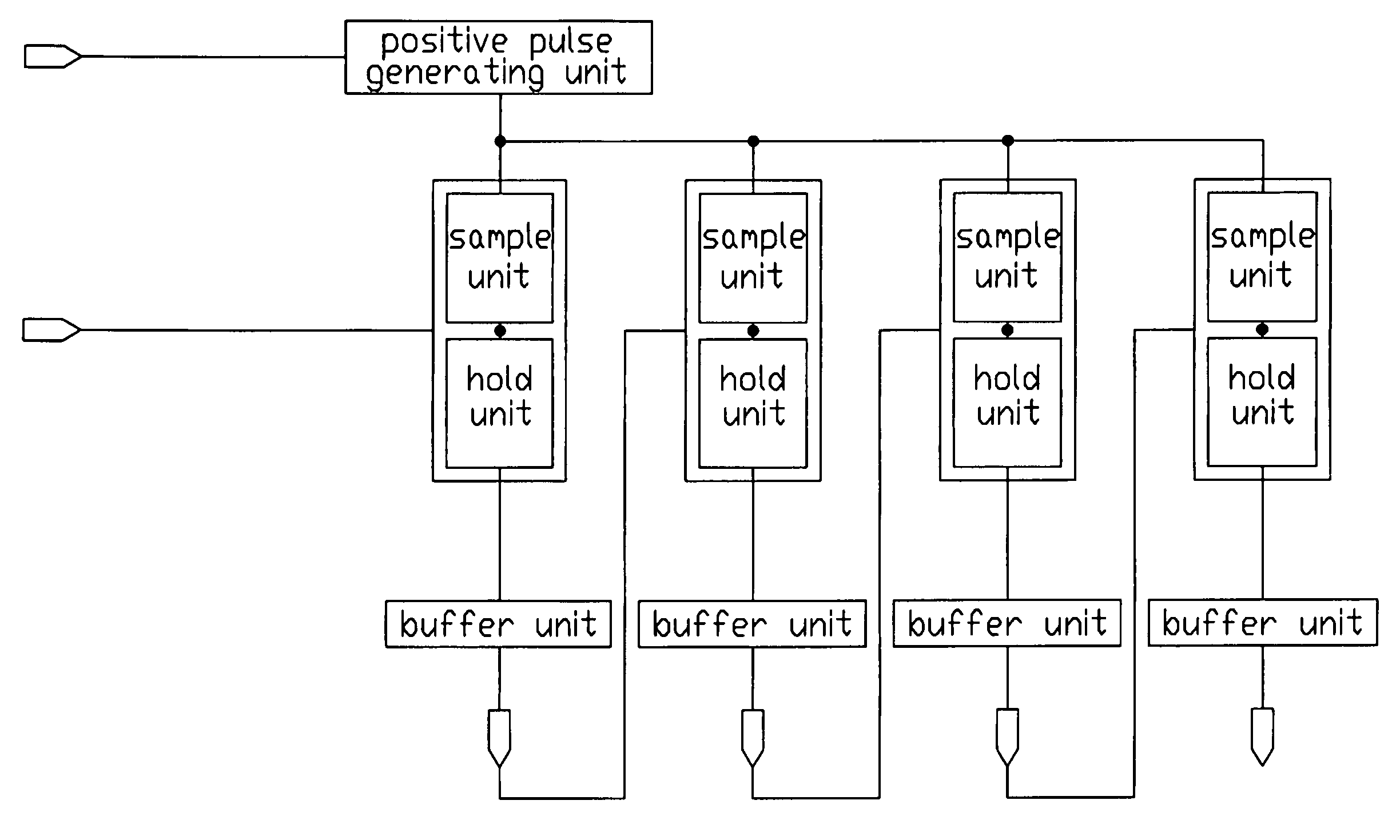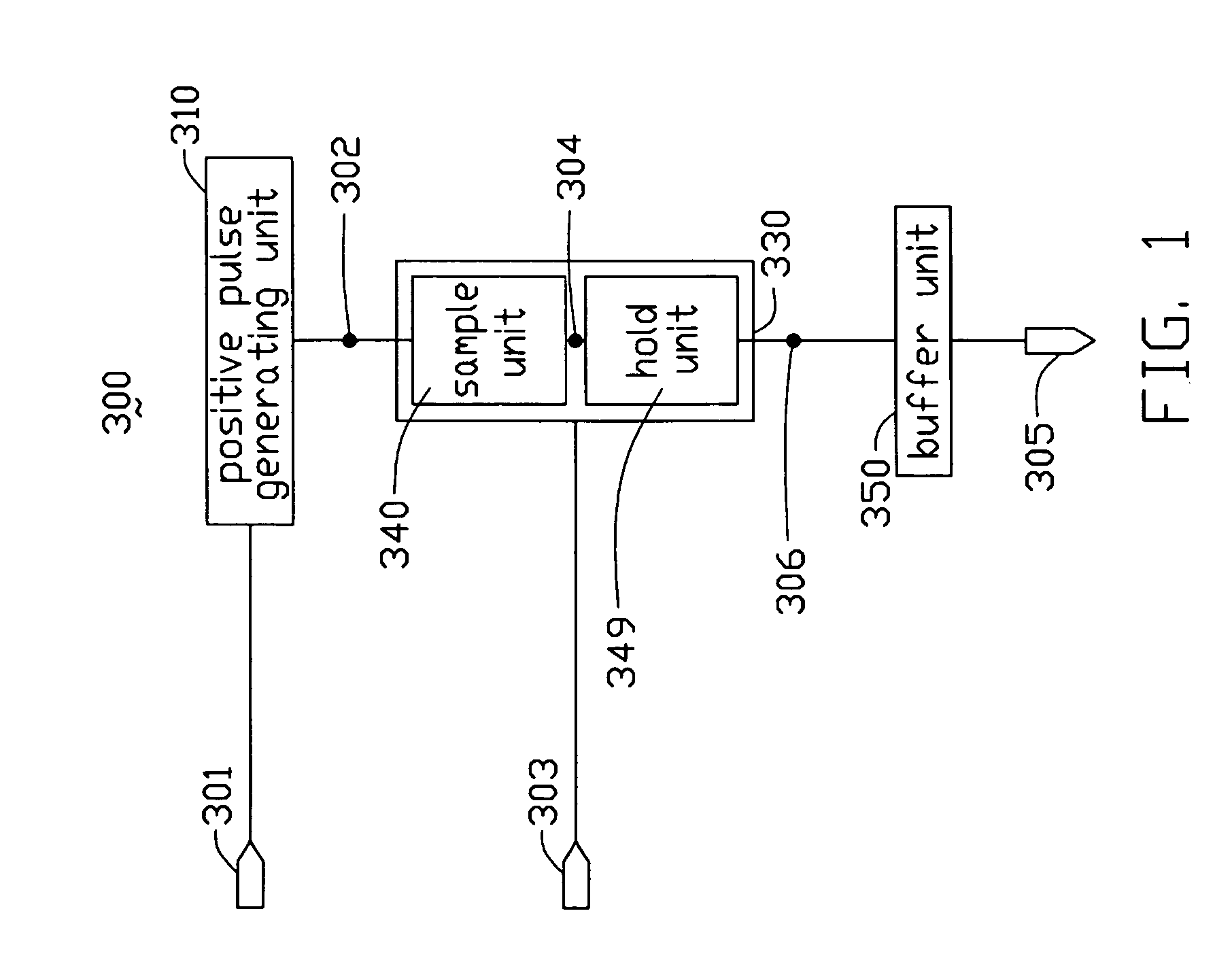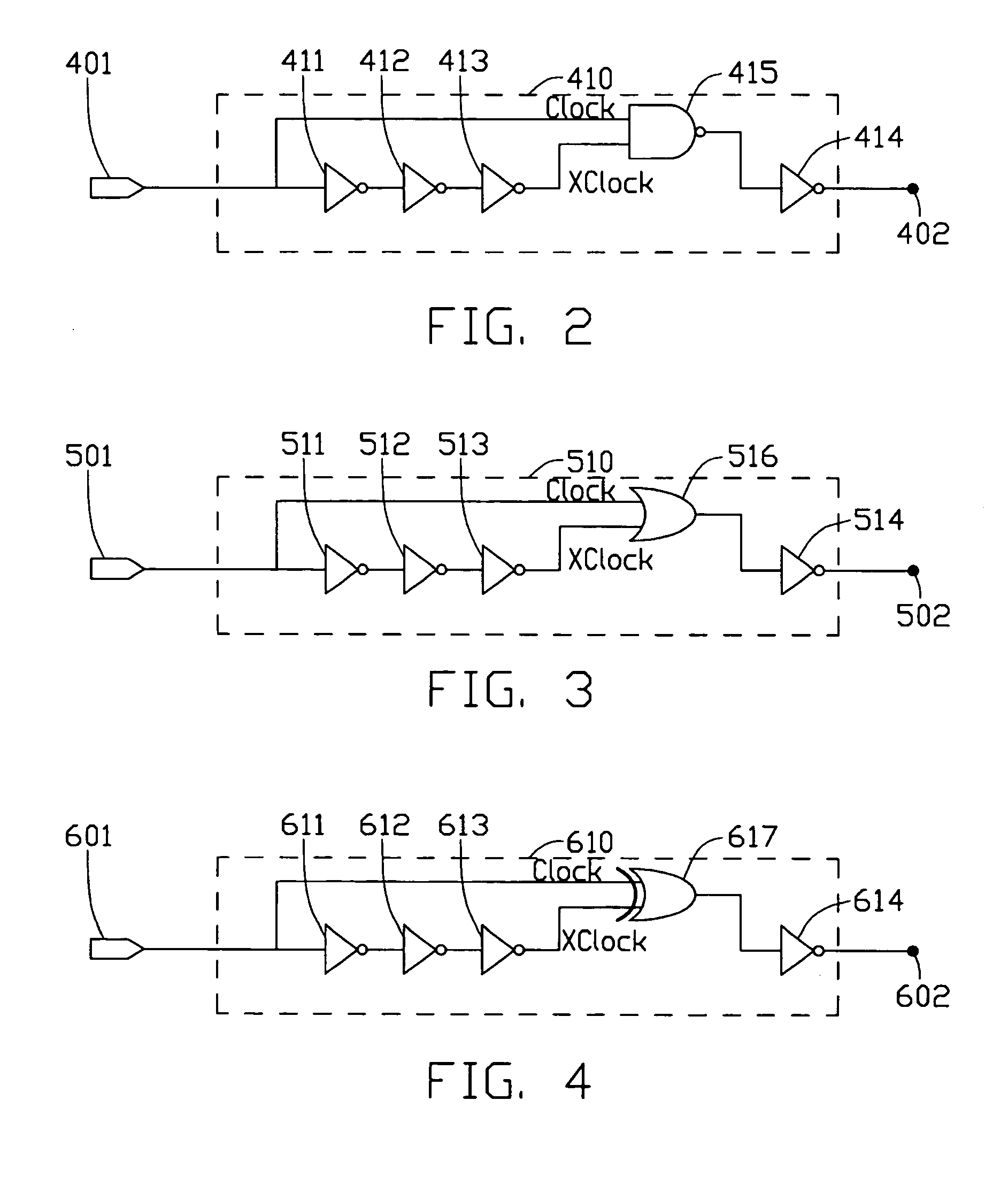Hybrid latch flip-flop
a hybrid latch and flip-flop technology, applied in the field of flip-flops, can solve the problems of high power consumption in the driver circuit, still needs a proper driving circuit for tft-lcd, etc., and achieve the effect of double the data transmitting rate of hl
- Summary
- Abstract
- Description
- Claims
- Application Information
AI Technical Summary
Benefits of technology
Problems solved by technology
Method used
Image
Examples
first embodiment
[0038]Referring to FIG. 2, this is a circuit diagram of the positive pulse generating unit of FIG. 1. The positive pulse generating unit 410 includes a first inverter 411, a second inverter 412, a third inverter 413, a fourth inverter 414, and a NAND gate 415. The input of the first inverter 411 is connected to the clock input 401. The output of the first inverter 411 is connected to the input of the second inverter 412. The output of the second inverter 412 is connected to the input of the third inverter 413. The output of the third inverter 413 is connected to one input of the NAND gate 415. The other input of the NAND gate 415 is connected to the clock input 401. The output of the NAND gate 415 is connected to the input of the fourth inverter 414. The output of the fourth inverter 414 is connected to the node 402. The first inverter 411 and the second inverter 412 are used for delaying the clock signal, and the third inverter 413 is used for delaying and inverting the clock signa...
second embodiment
[0039]Referring to FIG. 3, this is a circuit diagram of the positive pulse generating unit of FIG. 1. The positive pulse generating unit 510 includes a first inverter 511, a second inverter 512, a third inverter 513, a fourth inverter 514, and an OR gate 516. The input of the first inverter 511 is connected to the clock input 501. The output of the first inverter 511 is connected to the input of the second inverter 512. The output of the second inverter 512 is connected to the input of the third inverter 513. The output of the third inverter 513 is connected to one input of the OR gate 516. The other input of the OR gate 516 is connected to the clock input 501. The output of the OR gate 516 is connected to the input of the fourth inverter 514. The output of the fourth inverter 514 is connected to the node 502. The first inverter 511 and the second inverter 512 are used for delaying the clock signal, and the third inverter 513 is used for delaying and inverting the clock signal from ...
third embodiment
[0048]Referring to FIG. 7, this is a circuit diagram of the latch flip-flop of FIG. 1. The latch flip-flop 930 comprises a sample unit 940 and a hold unit 949. The sample unit 940 comprises: two PMOS type transistors, which are a first PMOS type transistor 931 and a second PMOS type transistor 932; and four NMOS type transistors, which are a first NMOS type transistor 941, a second NMOS type transistor 942, a third NMOS type transistor 943, and a fourth NMOS type transistor 944. The hold unit 949 includes a fifth inverter 947 and a sixth inverter 948.
[0049]The sources of the two PMOS type transistors 931, 932 are connected to a power source VDD. The gate of the first PMOS type transistor 931, the gate of the first NMOS type transistor 941, and the gate of the third NMOS type transistor 943 are connected to the node 902. The gate of the second NMOS type transistor 942 is connected to the data input 903. The node V9 is connected to the drain of the first PMOS type transistor 931, the ...
PUM
 Login to View More
Login to View More Abstract
Description
Claims
Application Information
 Login to View More
Login to View More - R&D
- Intellectual Property
- Life Sciences
- Materials
- Tech Scout
- Unparalleled Data Quality
- Higher Quality Content
- 60% Fewer Hallucinations
Browse by: Latest US Patents, China's latest patents, Technical Efficacy Thesaurus, Application Domain, Technology Topic, Popular Technical Reports.
© 2025 PatSnap. All rights reserved.Legal|Privacy policy|Modern Slavery Act Transparency Statement|Sitemap|About US| Contact US: help@patsnap.com



